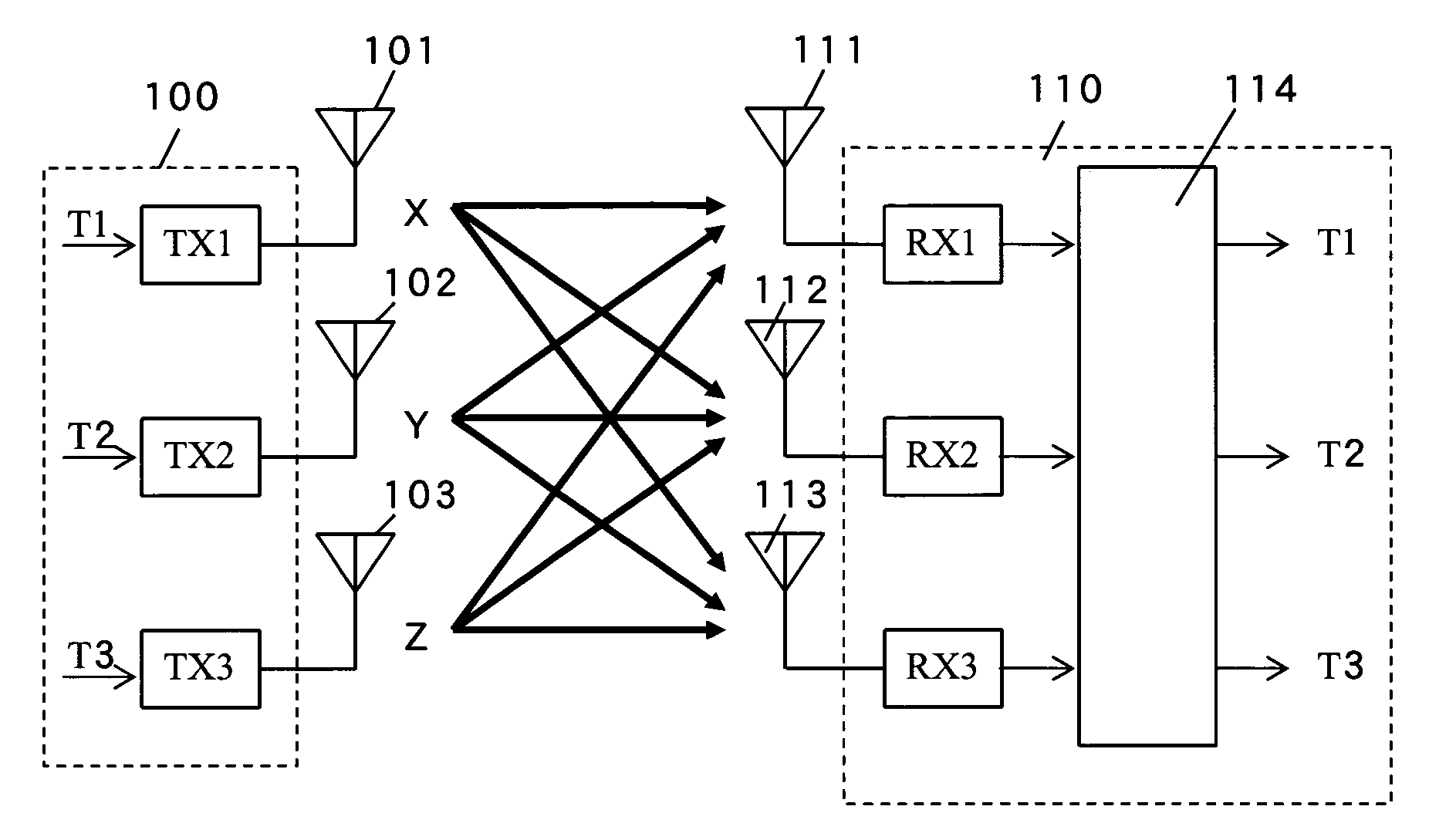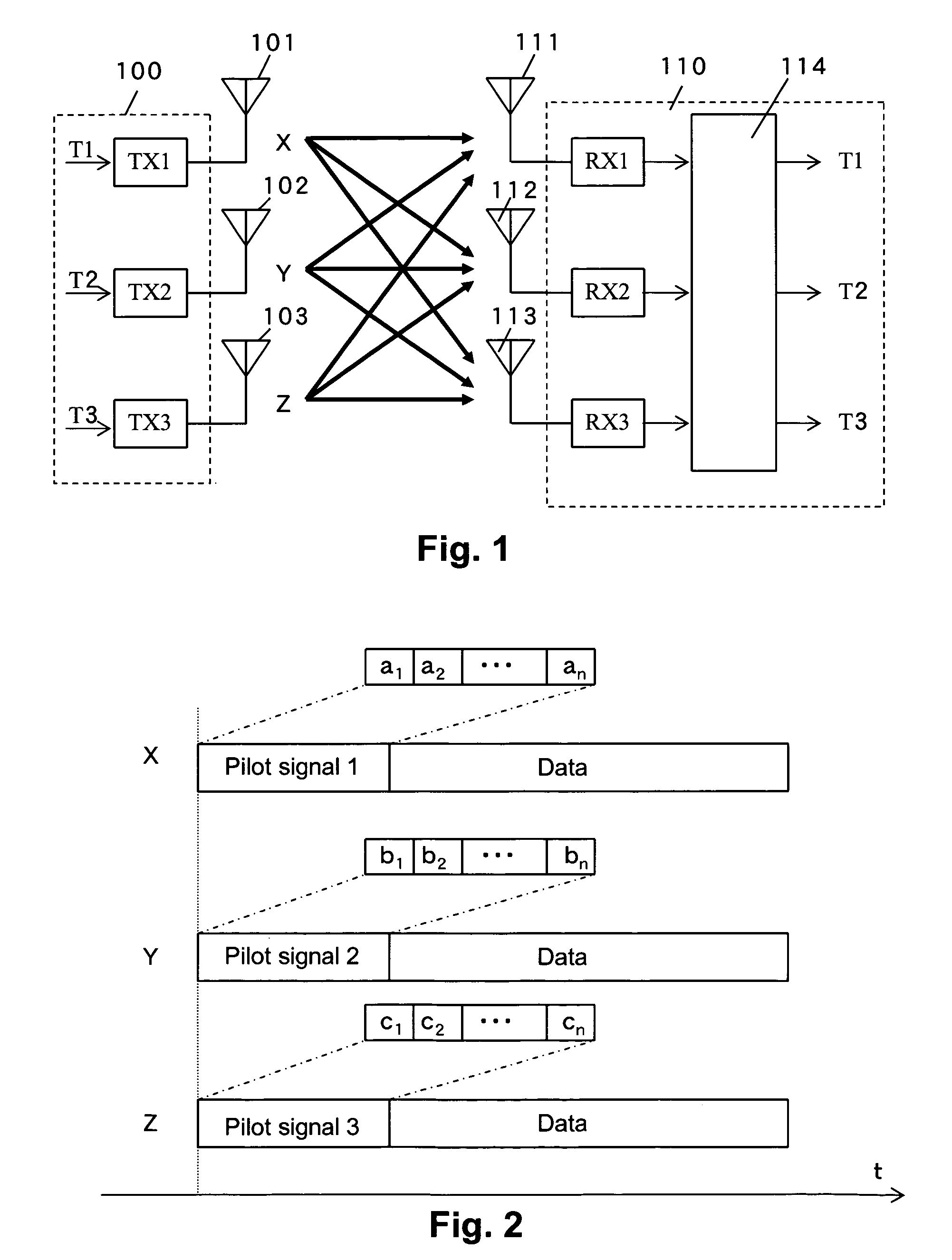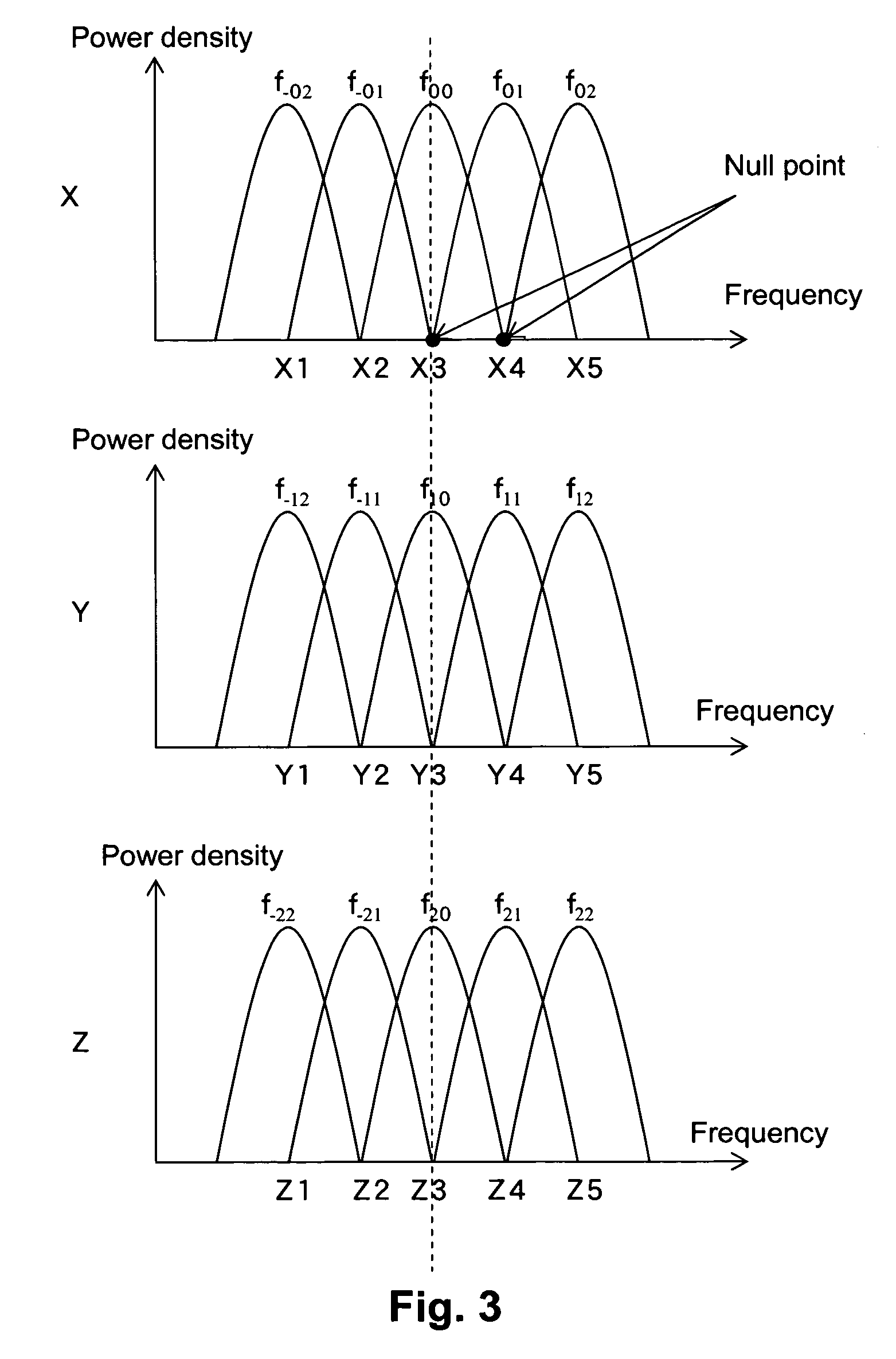OFDM transmission system
a transmission system and frequency division technology, applied in the field of orthogonal frequency division multiplexing, can solve the problems of inability to accurately estimate the transmission line under the use of previously received pilot signals, inability to accurately demodulate the corresponding signal by the receiving device, and inability to accurately estimate the transmission line at the early stage of communication, etc., to achieve accurate demodulation of signals and accurate estimation of transmission lines
- Summary
- Abstract
- Description
- Claims
- Application Information
AI Technical Summary
Benefits of technology
Problems solved by technology
Method used
Image
Examples
first preferred embodiment
[0022]FIG. 2 shows a data structure of transmit signals sent from the respective antennas 101 through 103 shown in FIG. 1. Each of the transmit signals comprises a pilot signal and a data main body located behind the pilot signal. For convenience of explanation, only the pilot signals and the data main bodies are disclosed in the present embodiment. As shown in FIG. 2, the respective transmit signals are transmitted so as to overlap one another on a time base.
[0023]FIG. 3 shows transmit signals for describing the relationships among power densities thereof and frequencies thereof. In FIG. 3, fij (where i and j are arbitrary integers) indicate subcarriers. The adjacent subcarriers are set so as not to interfere with one another. In FIG. 3 as well, Xi, Yi and Zi (where i are arbitrary integers) respectively indicate data strings of pilot signals of respective subcarriers. For example, Xi=(x1, x2, . . . , xn)(where n: positive integer).
[0024]The feature of the present invention resides...
second preferred embodiment
[0043]Combinations of respective pilot signals of transmit signals transmitted from respective antennas, whose pilot signals are placed in an orthogonal relationship, will next be explained using FIG. 4.
[0044]A description will first be made of a case in which a transmitting device and a receiving device respectively make use of two antennas. In this case, let's assume that in FIG. 1, the transmitting device 100 carries out communications using the antennas 101 and 102 and the receiving device 110 performs communications using the antennas 111 and 112. As shown in FIG. 4(A), respective pilot signals of subcarriers of a transmit signal X meet a relationship of (X1, X2, X3, X4, X5)=(A, B, C, D, E). Here, A through E indicate orthogonal code strings or sequences different from one another. On the other hand, respective pilot signals of subcarriers of a transmit signal Y satisfies a relationship of (Y1, Y2, Y3, Y4, Y5)=(F, G, H, I, J). Here, F through J indicate orthogonal code sequence...
PUM
 Login to View More
Login to View More Abstract
Description
Claims
Application Information
 Login to View More
Login to View More - R&D
- Intellectual Property
- Life Sciences
- Materials
- Tech Scout
- Unparalleled Data Quality
- Higher Quality Content
- 60% Fewer Hallucinations
Browse by: Latest US Patents, China's latest patents, Technical Efficacy Thesaurus, Application Domain, Technology Topic, Popular Technical Reports.
© 2025 PatSnap. All rights reserved.Legal|Privacy policy|Modern Slavery Act Transparency Statement|Sitemap|About US| Contact US: help@patsnap.com



